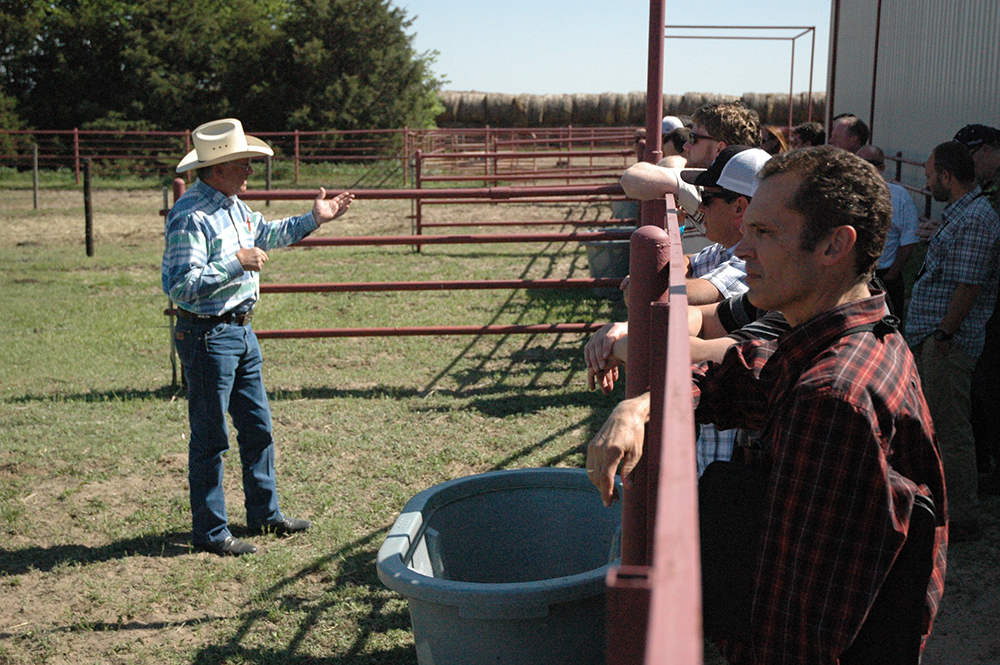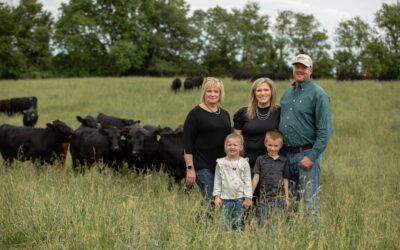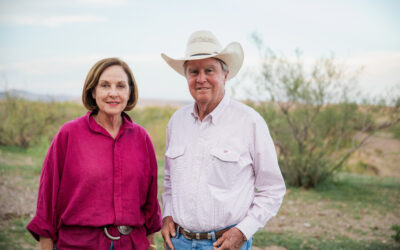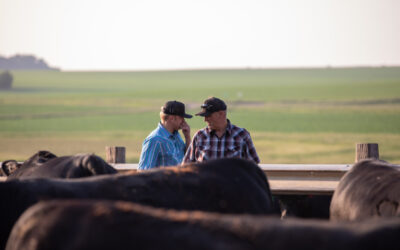
Small change$, big returns
The 5% effect compounds in your bottom line
by Miranda Reiman
Change doesn’t have to be dramatic and sweeping to make an impact.
Bill Rishel, a registered Angus breeder from North Platte, Neb., says little gains in efficiency, functionality and carcass merit all add up.
For easy math, he uses a 100-head example.
“As a cow-calf producer, the number one traits for profitability are fertility, reproduction and herd health,” he says.
If an average herd has 90 head survive to weaning, what would five more mean?
“Five additional head, because you had a little more fertility, you had a little better health or management—that’s about a $3,000 bump,” Rishel says.
Calving ease is one easy place to make that gain: “Years ago the only tool we had was phenotype,” he says.
“Today, when you add the genomics into the EPDs [expected progeny difference], we’re a lot further along than ever before in my life.”
Tools are available to pick the “right” sires and drive improvements in other areas, he says.
Those 95 calves move on to the industry average 205-day weaning, at 2.5 pounds (lb.) of weight per day of age (WDA). At just over $1.48 per hundredweight (cwt.), that’s $757.
But what if they gained more?
“That 5% increase, along with the five more calves—now you’re talking about some really big money,” Rishel says.

Such a percentage gain in weaning weights means WDA moves from 2.5 to 2.63 lb. That may not seem like much, he says, but figuring in all multipliers moves total calf price to more than $797, and $7,585 to the herd’s bottom line.
A boost in gain and efficiency could show up in the feedyard, too.
Increasing average daily gain (ADG) by that 5% would turn 3.4 lb./day into 3.57. On a 600-lb. total gain, that changes the per-head value by just $4.53, but measured on that 95 head it adds up to more than $430.
Feed efficiency can have much more effect, as improving from 6.2 lb. to 5.89 lb. of feed to gain a pound of beef, just 5%, creates a $35/head value difference. That’s $3,357 on the entire herd.
Efficiency and quality can be achieved in tandem, Rishel says, noting one last place to make an improvement: the cooler.
“Using genetic tools to make changes with highly heritable traits, now we can do something that impacts the entire industry,” he says.
Citing an Oklahoma State University sire evaluation study, he says 16 bulls with superior carcass traits added an average of $3.27/cwt. to the carcass value.
“I took that number and applied it to an 850-lb. average carcass weight,” Rishel says. “The added value per carcass was $27.80.”
That’s another $2,641.

“So let’s add this up,” he says. The greater value from 5% improvements at every stop comes to $14,013.65.
“If you calculate that by the number of cows, that’s actually about $140 per cow gained on that operation,” he says. “As a percent of the total carrying cost, that’s a big deal. A very big deal.”
It’s not just an on-paper exercise, Rishel says, noting many top customers who have proven the better-at-every-turn philosophy works.
“They just nail this every time out, due to genetics and their good management. They do everything right.”
Their reward is obvious. With loads that are more than 60% Certified Angus Beef ® and Prime, they consistently reap premiums of more than $100 above average.
“For those of us in the seedstock industry, it’s a balancing act to put all of these traits together in one package,” he says, but history shows an ability to move the needle in all areas. Some of today’s balanced sires are proof of that, he adds.
“We selected those cattle for function and soundness and reproduction, and then when we got in the sire evaluation work, we selected for carcass traits from that population,” Rishel says.
Careful selection of available genetics, tools and management by commercial cattlemen could put the 5% factor to work on their bottom lines.
You may also like
An Ambassador for All
Joanie, with daughter Lindsey and her husband, Adam Hall, raise registered Angus cattle with two primary goals: producing high-quality seedstock that perform well in a wide variety of environments and ensuring end-user satisfaction. Those goals tie everything together, from promoting Angus to other producers to sharing their story with CAB partners and beef consumers.
An Unforgiving Land
What makes a ranch sustainable? To Jon, it’s simple: the same family, ranching on the same land, for the last 140 years. The Means family never could have done that without sustainability. Responsible usage of water, caring for the land and its wildlife, and destocking their herd while the land recovers from drought.
System Over Scale
For Dallas Knobloch, it’s not about being the biggest feedyard—it’s about building a high-quality system that works. Today, with Tory’s wife Sadie and daughter Ivy, the Knobloch family owns and operates 4K Cattle. They feed 2,500 cattle at eight locations within 10 miles of home, manage 1,000 acres of crops and run a 125-head cow herd, all near Hills, Minn.



